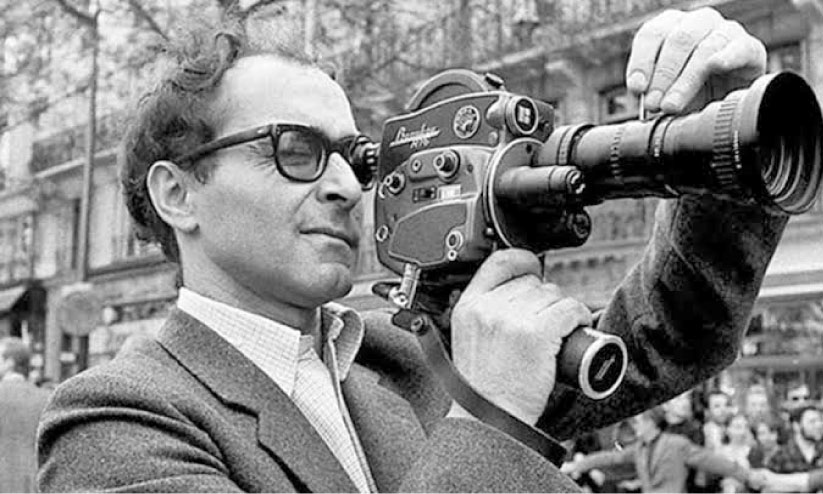During the interview, Godard asked – Where is this Kerala? CS was interviewed by a prominent film critic. Venkateswara explained Kerala. Movie lovers who have heard it would have said: Kerala is the land of those who watch Godard’s films with bated breath from Breathless onwards. Goddard turned to Malayalees online last year when he was honored with the IFFK Lifetime Achievement Award, and then the question about Kerala came up during the interview. Let’s start with such a question.
Since when did Kerala start watching Godard movies? His Breathless, released in 1960, was shown in various locations in Kerala by film companies in the 1980s (possibly even earlier). The film was first seen at such a screening. All the dialogue and actions of the hero played by Belmondo in the film go towards crime. The film established that the underworld is also the upper world at the same time and challenged Malayali’s “moral conscience”. It was that challenge that brought French innovation to Kerala; It has also sparked a series of open reflections on the grammar of cinema.
Seven years after “Breathless”, “Weekend” elevated him to the status of “master” of directors. Through the weekend and holiday presentation, many layers of human violence have been shattered on the screen. The couple travel from the city to visit the wife’s parents in the village. The goal is to kill the parents and inherit their property. Many experiences of violence come during this journey.
In an interview, Godard corrected reporters: “The weekend is not just violence, but also cannibalism: Franco-Swiss life after the two world wars led Godard to present the emotional worlds of people in Europe in this way” . Godard earned his living by overturning the concept of narrative cinema, presenting his arguments in such a way as to challenge the stereotypes of film critics.
In his 2004 publication “Our Music”, the famous Palestinian poet Mahmoud Darwish appeared and spoke about the Palestinian question. This docu-fiction film features Godard giving a lecture on “Image and Text” in Sarajevo. The core of his filmmaking is the same: what’s the scene, what’s the job? Indeed, his lifelong investigations into this matter are the entire content of his life. Whether this question had an answer was not important to him.
However, he thought this should be repeated as a new question. Godard dispelled the myth that screenplay is the foundation of cinema. Like any other director, Godard relied heavily on literature in his early films. Later we see him abandon the idea that literature is the refuge of cinema. It can be seen that Godard was guided by the later belief that visual language should not be extracted from literature. That is why he asked: “Why do we have to talk?”
In 2010 he made the film “Socialism”. The films “Goodbye to Language” in 2014 and “The Image Book” in 2018. I have to remember with regret that some of the audience shouted when Godard’s retrospective “The Image Book” was screened at Thiruvananthapuram IFFK. Kouviyavar’s reasoning is that the film has neither a story nor a narrative. The voice of the poet and painter George rose as the procession and the screening of the film proceeded together: Those who are not interested go away, we want to see this film: some have gone. The crowd was contained. Imagebook continued on the curtain.
Entitled Drishya Pustakam, he presented in the final film the argument, perhaps with various disagreements, that the visual aspect is the book and not the other way around. The film just before ‘Farewell to Language’ is the entrance to the latest film. Humans weren’t that “emoji language” when that movie came out. But when we see it today, we can understand more deeply how people greet languages that have survived until now.
You can recognize how Godard’s idea works when you think of the emojis that have already been exchanged by people around the world after hearing the news of Godard’s death. Godard firmly believed that visual language was a socialist language and that it would help man more. The character of “Alfe Villa” says: Sometimes, reality is too complex for oral communication – this is the problem Godard sees in spoken language. He firmly believed that visual language would overcome him.
In the interview at the beginning of this post, Venkiti Godard is asked: how has the Covid era changed cinema? Online platforms, OTTs, etc. are they killing the “publicity” of the art of cinema? Is cinema becoming a private art? Or is the pandemic changing things this way? With the help of a French translator, Godard replied: When I was in the cinema, the producer / production was the most important thing.
But now distribution is the main thing. The distribution / distributors have swallowed the producer / production of the film. Through this observation, he presented the two ends of his long film career (of world cinema itself). Godard, who argued that cinema does not exist, but only projects (shows, exhibitions), left that theoretical level and summed up the life of today’s cinema with these words.
There doesn’t seem to be a Godard film that doesn’t touch on the adolescent issues of several generations. At the time we were all young: not only us, but also Godard, the friend said that he was with us when we wandered to see those films. I answered. Perhaps that is why at the news of his death, “the youth of the film has vanished!” It seems to be happening. As if humanity’s resplendent youth had vanished, at least temporarily. Thank you Maestro for your wonderful films. Now relax.
–

/4424350-32JC3LG-highres.jpg)
